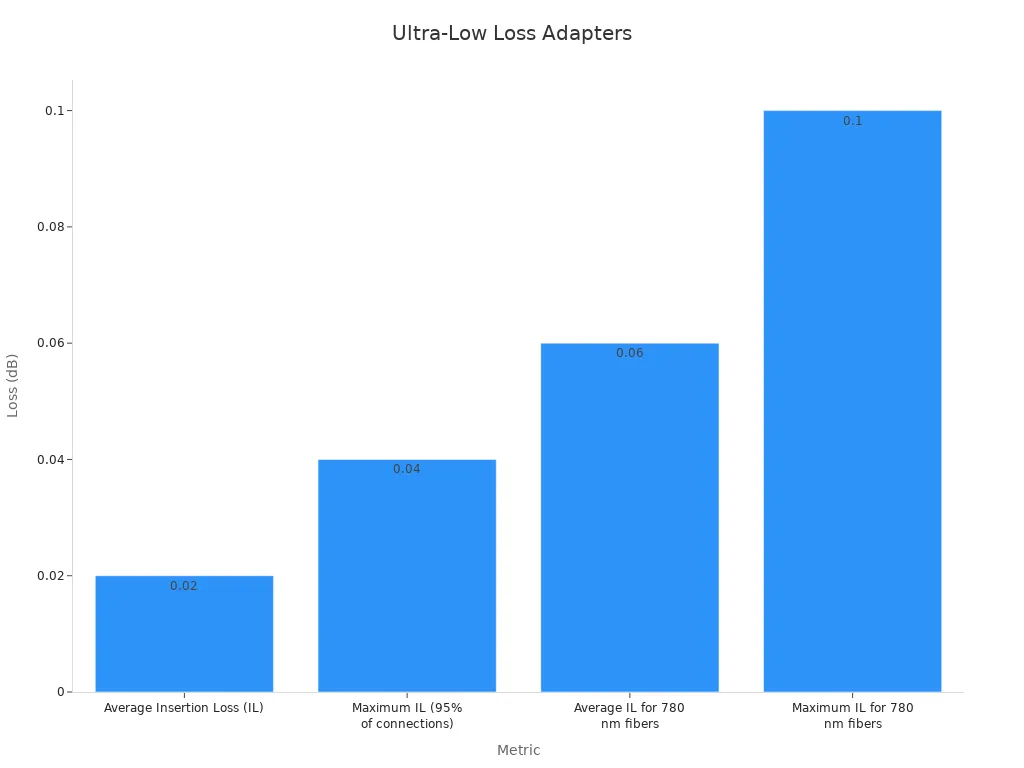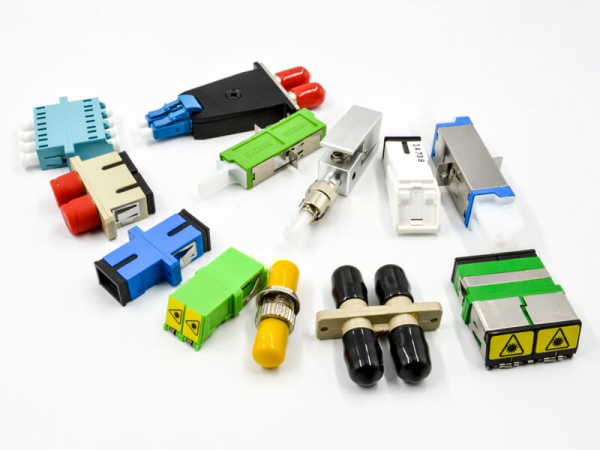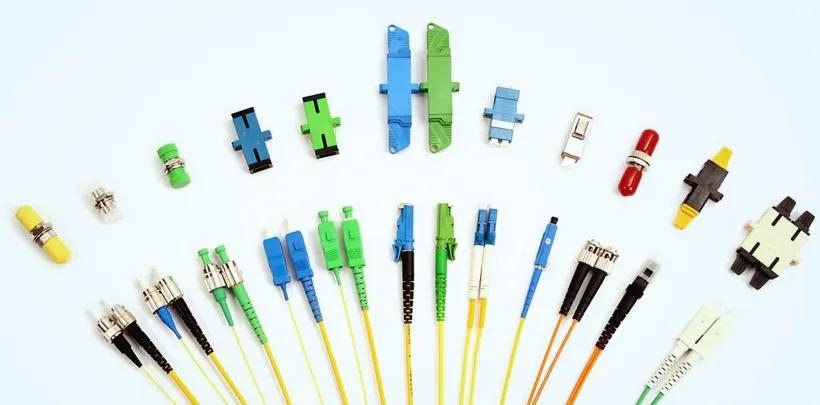Fiber optic adapters play a central role in ensuring high-speed, reliable connectivity in modern networks. Their innovative designs enable industries to meet growing demands for advanced communication systems. For example, the global fiber optic adapter market, valued at $500 million in 2023, is projected to reach $1.2 billion by 2032, driven by applications in telecommunications, healthcare, and smart cities. Companies like Dowell contribute to this growth by offering cutting-edge solutions, such as the SC APC adapter and SC Simplex adapter, which enhance efficiency and compatibility. Additionally, the rising adoption of technologies like the fiber optic adapter female and SC UPC adapter highlights their increasing relevance in next-generation connectivity.
Key Takeaways
- Fiber optic adapters are important for fast connections. They help reduce signal loss and keep data moving smoothly in networks.
- New designs, like ones with low signal loss and bend-resistant features, improve how they work. These adapters are key for telecom, healthcare, and smart city systems.
- Automated setups make installation easier and faster. This helps create better and bigger networks.
Understanding Fiber Optic Adapters
What Is a Fiber Optic Adapter?
A fiber optic adapter is a small yet critical device that connects two fiber optic cables, ensuring seamless data transmission. These adapters align the cores of the cables with precision, allowing light signals to pass through with minimal loss. They are defined by several technical specifications, including the materials used for the alignment sleeve, such as ceramic or metal, and the design of the adapter body, which can be metallic, semi-metallic, or non-metallic. Additionally, they support various connector types and configurations, including simplex, duplex, or quad, and are compatible with single-mode or multimode fibers. These features ensure signal integrity and compatibility across diverse network setups.
Why Fiber Optic Adapters Are Essential for Connectivity
Fiber optic adapters have played a pivotal role in the evolution of connectivity. In the late 1960s, the internet began with ARPANET, which relied on copper lines for data transmission. As demand for higher data rates grew, the limitations of copper became evident. This led to the adoption of fiber optics in the 1980s and 1990s, followed by significant investments in fiber optic infrastructure during the 1990s and 2000s. The introduction of dense wavelength division multiplexing (DWDM) further revolutionized networks by enabling multiple data streams to transmit simultaneously.
Today, fiber optic adapters enhance signal quality and reduce losses, making them indispensable in applications like fiber-to-the-home (FTTH) deployments and long-distance communication. They minimize insertion loss and back reflection, preserving signal integrity over extensive networks. In mobile networks, these adapters ensure low-loss connections in backhaul applications, boosting reliability and performance. Their versatility and efficiency make them a cornerstone of modern connectivity solutions.
Latest Innovations in Fiber Optic Adapter Technology
Compact Fiber Optic Adapter Designs
The demand for space-efficient solutions has driven the development of compact fiber optic adapter designs. These adapters are engineered to fit into high-density environments, such as data centers and telecommunications hubs, where space is at a premium. By reducing the physical footprint, compact designs allow for more connections within the same area, enhancing scalability. Companies like Dowell have introduced innovative compact adapters that maintain high performance without compromising durability or signal integrity. This advancement supports the growing need for efficient and reliable connectivity in modern networks.
Enhanced Durability for Long-Term Use
Fiber optic adapters must withstand challenging environments, including extreme temperatures, humidity, and physical stress. Enhanced durability has become a key focus in recent innovations. Manufacturers now use advanced materials like high-strength ceramics and corrosion-resistant metals to improve the lifespan of these adapters. For instance, Dowell’s SC APC adapter features robust construction that ensures consistent performance over extended periods. These durable designs reduce maintenance costs and downtime, making them ideal for critical applications in industries like healthcare and telecommunications.
Ultra-Low Loss Fiber Optic Adapters
Ultra-low loss fiber optic adapters represent a significant leap in connectivity performance. These adapters minimize insertion loss, ensuring that data signals remain strong and clear over long distances. Recent advancements have achieved remarkable results, as shown in the table below:
| Metric | Value |
|---|---|
| Average Insertion Loss (IL) | 0.02 dB |
| Maximum IL (95% of connections) | 0.04 dB |
| Average IL for 780 nm fibers | 0.06 dB |
| Maximum IL for 780 nm fibers | 0.10 dB |

These improvements ensure superior signal quality, making ultra-low loss adapters essential for applications like data centers and long-haul communication networks.
Bend-Insensitive Fiber Optic Adapters
Bend-insensitive fiber optic adapters address a common challenge in fiber optic networks: signal loss due to cable bending. These adapters use advanced optical fibers that maintain signal integrity even when bent at sharp angles. This innovation is particularly beneficial in confined spaces, such as urban infrastructure and smart city deployments. By reducing the risk of signal degradation, bend-insensitive adapters enhance the reliability of modern connectivity solutions.
Automated Installation Technologies
Automation has revolutionized the installation process for fiber optic adapters. Automated technologies streamline the alignment and connection of fiber optic cables, reducing human error and installation time. IBM’s co-packaged optics (CPO) technology exemplifies this trend. CPO technology not only enhances optical connectivity but also reduces energy consumption by over five times compared to traditional methods. This innovation accelerates data processing capabilities, enabling faster training of large language models and other computational tasks. Automated installation technologies are paving the way for more efficient and scalable network deployments.
Universal Compatibility in Fiber Optic Adapters
Universal compatibility has become a cornerstone of modern fiber optic adapter design. Adapters now support a wide range of connector types, including SC, LC, and MPO, as well as single-mode and multimode fibers. This flexibility simplifies network upgrades and expansions, reducing the need for specialized components. Dowell’s SC Simplex adapter exemplifies this trend by offering seamless integration across diverse network setups. Universal compatibility ensures that fiber optic adapters remain versatile and future-proof, meeting the evolving demands of next-generation connectivity.
Impact of Fiber Optic Adapter Innovations on Industries
Telecommunications and 5G Expansion
Fiber optic adapter innovations have significantly influenced the telecommunications sector, particularly in the rollout of 5G networks. These adapters enable seamless connections between fiber optic cables, ensuring high-speed data transmission with minimal signal loss. The demand for high data rate transceivers has grown exponentially, driven by the need to support data centers and telecom infrastructure.
In Latin America, FTTH (Fiber-to-the-Home) and FTTB (Fiber-to-the-Building) subscriptions increased by 47% in 2021, highlighting the rapid adoption of fiber optic technology. Similarly, in India, the acceleration of fiber deployment post-5G rollout has reached an impressive 0.1 million route kilometers per month. These metrics underscore the critical role of fiber optic adapters in meeting the connectivity demands of modern telecommunications networks.
| Metric/Statistic | Value/Description |
|---|---|
| FTTH/FTTB subscriptions growth in Latin America | 47% increase over 2021 |
| Fiber deployment acceleration in India post-5G rollout | 0.1 million route km/month |
| Demand for high data rate transceivers | Critical for supporting data centers and telecom needs |
| Growth in data centers globally | Significant driver for fiber optic components market |
Healthcare and Telemedicine Advancements
The healthcare industry has embraced fiber optic technology to enhance telemedicine and remote patient monitoring. Fiber optic adapters play a vital role in ensuring reliable and high-speed data transmission for medical imaging, electronic health records, and real-time consultations. These adapters maintain signal integrity, which is crucial for transmitting large medical files and enabling seamless communication between healthcare providers and patients.
Telemedicine platforms rely on low-latency networks to deliver high-quality video and audio streams. Fiber optic adapters, with their ultra-low loss and bend-insensitive designs, ensure uninterrupted connectivity even in challenging environments. This reliability has become indispensable in rural and underserved areas, where telemedicine bridges the gap in healthcare access. By supporting advanced medical technologies, fiber optic adapters contribute to improved patient outcomes and operational efficiency in healthcare facilities.
Smart Cities and IoT Integration
Smart cities depend on robust connectivity to integrate Internet of Things (IoT) devices and enable efficient urban management. Fiber optic adapters facilitate the high-speed data transfer required for applications like traffic monitoring, energy management, and public safety systems. Their compact and durable designs make them ideal for deployment in urban infrastructure, where space and environmental factors pose challenges.
Bend-insensitive fiber optic adapters have proven particularly valuable in smart city projects. These adapters maintain signal quality even in confined spaces, such as underground conduits and densely packed utility poles. By ensuring reliable connectivity, fiber optic adapters support the seamless operation of IoT devices, enabling smart cities to optimize resources and enhance the quality of life for residents.
Data Centers and Scalable Connectivity
Data centers serve as the backbone of modern digital infrastructure, handling massive amounts of data daily. Fiber optic adapters are essential for managing large data transfers between servers, storage devices, and networking equipment. Their ability to minimize signal loss and support high-speed connections ensures the efficiency and reliability of data center operations.
Effective testing procedures for fiber optic cabling are critical for new data centers. These procedures verify that installations meet performance standards and provide a reference for troubleshooting. Modern data centers utilize advanced fiber optic technology to achieve scalability and low latency, meeting the growing demand for bandwidth. As data centers expand globally, the emphasis on quality testing and reliable fiber optic adapters becomes increasingly important for maintaining network performance.
Future Trends in Fiber Optic Adapter Technology
AI-Driven Fiber Optic Adapter Diagnostics
Artificial intelligence (AI) is transforming the way fiber optic networks are monitored and maintained. AI-driven diagnostics enable real-time detection of issues such as signal loss, misalignment, or physical damage in fiber optic adapters. These systems analyze vast amounts of data to identify patterns and predict potential failures before they occur. By integrating AI, network operators can reduce downtime and improve overall efficiency. For example, predictive maintenance powered by AI minimizes the need for manual inspections, saving both time and resources. This innovation ensures that networks remain reliable and capable of handling increasing data demands.
Eco-Friendly and Sustainable Fiber Optic Adapter Designs
Sustainability is becoming a priority in the development of fiber optic technology. Manufacturers are now focusing on eco-friendly materials and energy-efficient production methods for fiber optic adapters. Recyclable components and biodegradable materials are being incorporated to reduce environmental impact. Additionally, energy-efficient designs lower the carbon footprint of manufacturing processes. Companies like Dowell are leading the way by adopting sustainable practices in their product lines. These advancements align with global efforts to create greener technologies, ensuring that next-generation connectivity solutions are both effective and environmentally responsible.
Quantum Communication and Fiber Optic Adapters
Quantum communication represents the future of secure data transmission. Fiber optic adapters are expected to play a crucial role in this emerging field. These adapters will need to support the unique requirements of quantum networks, such as maintaining the integrity of quantum states during transmission. Innovations in materials and design will be essential to meet these demands. As quantum communication technology advances, fiber optic adapters will evolve to ensure compatibility and performance. This development will pave the way for ultra-secure communication systems, revolutionizing industries like finance, defense, and healthcare.
Fiber optic adapter technology has transformed connectivity with advancements like bend-insensitive fibers and multimode designs. Companies, including Dowell, drive progress by investing in reliable fiber management systems.
Post time: May-04-2025



